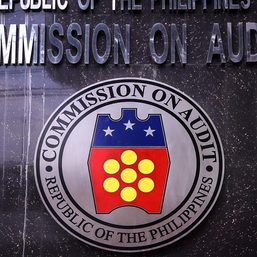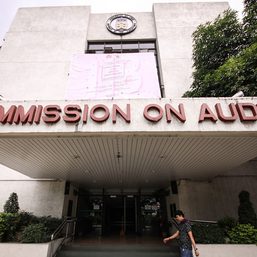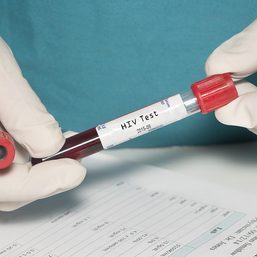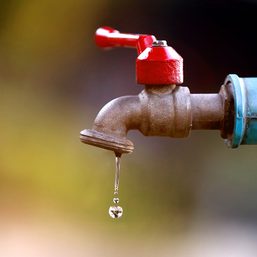SUMMARY
This is AI generated summarization, which may have errors. For context, always refer to the full article.

MANILA, Philippines – In just a matter of days, Mayon Volcano was placed under Alert Level 2 then Alert Level 3, with state volcanologists warning that the volcano in Albay was showing an “increased tendency towards a hazardous eruption.”
The Philippine Institute of Volcanology and Seismology (Phivolcs) has provided four eruption scenarios for the volcano, given its current state of unrest.
But before that – here is an overview of what has happened so far:
Alert Level 2 was raised on Monday, June 5, triggered by a spike in rockfall events.
“Pronounced increases in rockfall signify the extrusion of new lava beneath the summit lava dome, destabilizing this and causing its spalling or collapse,” Phivolcs explained in a report covering Mayon activity in the first 10 days of June.
Extrusion means molten rock is being pushed out onto the surface. A lava dome, meanwhile, is an accumulation of “highly viscous lava above or near the vent/s where they were erupted during slow flow,” which Phivolcs likened to glue oozing out from a container’s hole.
While there was increasing rockfall at the time, volcanic earthquakes were “absent to sparse,” sulfur dioxide (SO2) emissions were only at “background or baseline levels,” and “short-term ground deformation consisted mainly of swelling of the middle to upper slopes of the edifice.”
But on Thursday morning, June 8, Phivolcs observed pyroclastic density currents (PDCs) in the Bonga (Legazpi City), Mi-isi (Daraga), and Basud (Santo Domingo) gullies, or narrow valleys, as far as 2 kilometers from the summit crater.
PDCs are made up of fragmented volcanic particles, gases, and ash that travel down volcanic slopes at high speeds.
“This indicated that new, less degassed lava was already being spalled from the summit dome and that eruption of very slowly extruding magma had slightly increased,” Phivolcs said.
This prompted the agency to raise Alert Level 3 at noon on Thursday.
By early Saturday morning, June 10, a new summit lava dome had emerged from the crater, after its preexisting one was “pushed out in increments that formed rockfall.” As of 7 pm on Saturday, 654 rockfall events had been recorded for June, along with 7 PDCs.
Also on Saturday, SO2 emission “increased beyond baseline levels,” reaching an average of 1,205 tons per day.
What’s next?
At present, new lava is slowly flowing out of Mayon’s summit and SO2 emission is “moderately elevated,” while seismic and ground deformation parameters are still considered low.
Phivolcs has warned that “a hazardous eruption is possible within weeks or even days.” But it is impossible to predict with absolute certainty that this type of eruption will indeed occur.
One of the four scenarios shows Alert Level 3 will be maintained, two scenarios would mean the declaration of Alert Level 4, and the worst-case scenario will lead to the raising of Alert Level 5 – the highest.
Scenario A: Alert Level 3 will be maintained
If the current rate of extrusion and low-level parameters continue, there would be a slow lava dome and short lava flow extrusion, similar to Mayon’s 2014 eruption. The activity may persist for a few months.
Scenario B: Alert Level 4 will be raised
If extrusion rates increase, higher SO2 emission levels persist, seismic activity such as low-level tremors occur, and there is a cycle of inflation (swelling) and deflation (unswelling) of the edifice, there would be a slow but sustained lava extrusion, similar to the volcano’s 2006 eruption. The activity may last for a few months.
Scenario C: Alert Level 4 will be raised
If data show significant hikes in SO2 emission, increased seismicity (low-frequency volcanic earthquakes and tremors), and inflation of the entire edifice, there would be lava fountains and lava flows with occasional explosions and PDCs within the 6-kilometer permanent danger zone (PDZ), similar to Mayon’s 2018 eruption. The activity may last for a few months.
Scenario D: Alert Level 5 will be raised
If there is a rapid escalation – or sudden drop – in SO2, as well as a surge in volcanic earthquakes and ground deformation, this may lead to an explosive eruption with high-intensity lava fountains, long lava flows, and PDCs that could go beyond the PDZ, similar to the volcano’s 2000 eruption. The activity may last for a few days to weeks.
– Rappler.com
Add a comment
How does this make you feel?










There are no comments yet. Add your comment to start the conversation.